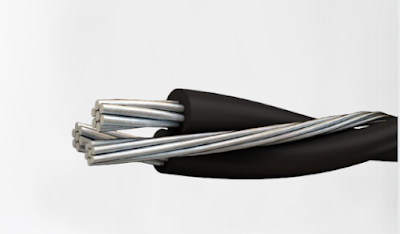Safety Considerations and Compliance Standards for Type 441 Cable
Many mine accidents and incidents have a causal factor in the rules and regulations that are supposed to prevent the incident from happening. The causes include a lack of awareness or comprehension, ignorance, or intentional violations.
Type 441 cable is specifically designed for use in underground mining operations. When it comes to safety considerations and compliance standards for this type of cable, there are several key aspects to consider. Here are some additional details:
Safety considerations for type 441 mining cable
Insulation and jacketing materials
Type 441 mining cables are typically insulated and jacketed to provide protection against harsh mining environments.
Typically, the insulation material is a flame-retardant and oil-resistant compound, such as cross-linked polyethylene (XLPE), which has excellent electrical insulation properties.
The jacket material is frequently made of thermoplastic or thermosetting compounds that provide resistance to abrasion, moisture, and chemicals found in mining environments.
Read also: Everything you need to know about type 241.1 cable
Electrical properties
Mining cables must meet specific electrical requirements in order to operate safely and reliably.
To handle the electrical loads encountered in mining applications, Type 441 cables are typically designed with appropriate voltage ratings and conductor sizes.
These cables may also include stranded conductors to increase flexibility and reduce the risk of breakage due to repetitive bending.
Flame Resistance
Flame resistance is critical in underground mining because flammable gasses and dust can be present.
Type 441 mining cables are designed to resist flame propagation and limit fire spread. They frequently adhere to industry standards.
Mechanical Durability
Mining environments can be physically taxing, exposing cables to constant vibrations, mechanical stresses, and sharp objects.
Type 441 cables are designed to withstand these conditions. They are frequently built with tough materials, such as heavy-duty insulation and jacketing, to withstand abrasion, impact, and crushing.
They may also have armor or shielding to protect them from external damage and electromagnetic interference.
Standards of Compliance
Adherence to relevant industry standards and regulations is critical for ensuring the safety and reliability of mining cables.
The International Electrotechnical Commission (IEC) and the American National Standards Institute (ANSI) have established recognised standards for type 441 mining cables.
Specific mining regulatory bodies or agencies in some regions may establish additional requirements for mining cables.
Environmental Considerations
Mining operations frequently expose cables to harsh environmental conditions such as high humidity, temperature fluctuations, and chemical exposure.
Type 441 mining cables are built to withstand these harsh conditions. They may have moisture resistance, UV resistance for outdoor applications, and resistance to chemicals commonly found in mining operations, such as oils, fuels, and solvents.
If you choose the best mining cable supplier, then you don’t need to worry about the temperature ratings.
Grounding and bonding
Mining cable grounding and bonding are critical for electrical safety. Grounding conductors or metallic armor/shielding that serves as a grounding path are frequently used in Type 441 mining cables.
These features aid in the prevention of static electricity buildup and the reduction of the risk of electric shocks, fires, and explosions in potentially hazardous mining environments.
Flexibility
Mining cables must be flexible and easy to install in order to accommodate the complex layouts and equipment configurations found in mining operations.
Type 441 cables are frequently designed to be flexible, allowing them to be routed through tight spaces and around obstacles.
Colour-coded conductors or numbered insulation may also be included for ease of identification and installation.
Certification
Type 441 mining cables may be subjected to rigorous testing and certification processes to ensure compliance with safety standards.
This could include flame resistance, electrical properties, mechanical durability, and environmental resistance testing. Certifications from reputable third-party testing laboratories ensure that the cables meet all applicable standards and regulations.
Regular maintenance
Inspection of mining cables is critical for identifying potential hazards and ensuring continued safe operation.
To maintain safety standards, mining companies should establish maintenance procedures and inspection schedules to monitor cable conditions, identify signs of wear, damage, or degradation, and take appropriate actions, such as repairs or replacements.
Training and safety awareness
In addition to using compliant cables, ensuring the safety of mining operations necessitates proper personnel training and safety awareness.
Mining companies should provide training programmes that teach employees how to handle, install, and maintain mining cables safely. This helps to prevent accidents, promote safe practices, and improve the mining industry's overall safety culture.
Wrapping up
Mining companies can improve the safety and reliability of their electrical systems by taking these factors into account and adhering to relevant safety standards and regulations when using Type 441 mining cables.
For specific guidelines and requirements pertaining to your mining operation, it is always recommended that you consult with industry experts, mining cable suppliers, and local authorities like Znergy Cable.




Comments
Post a Comment